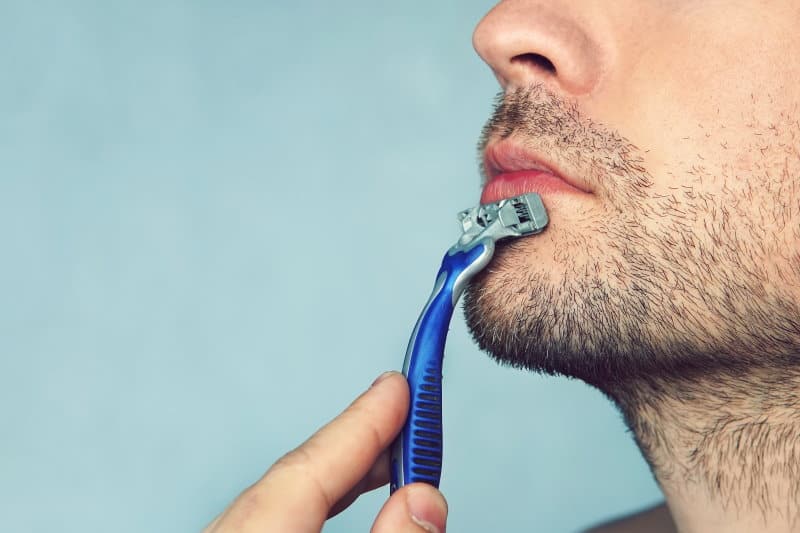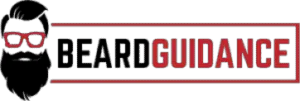For some, growing out a beard is a difficult and time-consuming process. Now, imagine growing it out only to find you’re getting a rash under it.
So, what do you do now? Do you shave it? Trim it? Lather on some ointment?
Fortunately, there are many ways to deal with a rash under your beard. One of the most likely causes is dry skin. In which case, a nourishing beard routine can keep the rash at bay. There are other culprits as well, but all that can be avoided by maintaining good beard hygiene.
Stick around to find out more. We’ll talk about possible causes and treatments. We’ll also tell you when to seek professional help.
Let’s get started.
How to Deal with the Rash Under Your Beard

An itching beard frenzy can make you just reach for the nearest razor and chop it all off. Yet, don’t be too quick to shave off your beard. Check out the following treatments first before you make any rash decisions.
Defining Beard Rash
Unsure whether it’s a rash or something else? There are ways to get a quick diagnosis.
First off, beard itching is normal. Your hair is growing out, and it’s bound to get a little uncomfortable.
You should only worry if the itchiness gets to be too much or if you notice red patches and bumps around the beard area. That’s when you need to take action.
Why is There a Rash Under Your Beard?
Before diving straight into a solution, you might want to learn more about what’s causing your beard rash.
The most common cause is dry skin. If you’re not moisturizing your facial hair, it can feel like a rough sponge on your skin. It might feel like it’s poking at your cheeks and jawline.
Another reason could be the products you’re using on your beard. For example, cheap two-bladed razors can cause damage to your skin. Another likely culprit could be that your shaving cream is irritating your skin, causing it to break out in hives.
The rash under your beard could also be caused by a fungal condition known as tinea barbae. Also known as ringworm, you might contract it from your pet or if you share a razor with someone who is already infected.
Another reason there’s a rash under your beard could be from ingrown hairs. These usually happen if you don’t shave properly or have clogged skin. Both conditions can be easily avoided with a daily beard care routine.
4 Foolproof Methods to Treat Beard Rash
Now it’s time to look at how to treat the rash and stop the itch.
Method 1: Moisturize Your Skin
Take care of the skin under your beard. Hair moisture isn’t only limited to the hair on your scalp. Your beard needs some hydration care as well.
For starters, you want to soften your bristly beard by avoiding hot water since it can strip away its natural oils. Hot water can also aggravate your skin and cause more irritation.
We recommend taking a trip down to the men’s care aisle and look for some skin moisturizer, beard oil, or beard balm. Make sure your moisturizer has SPF 30 for further protection. You should also consider getting a gentle skin cleanser.
Alternatively, you can try to make a DIY remedy using nourishing oils. According to medical experts, neem oil is a great way to treat dry skin and rashes—perfect for your beard itch. The good news is that neem oil also has antifungal and antibacterial properties.
Method 2: Maintain Good Beard Hygiene

Sometimes it’s not enough to simply rinse your beard and call it a day. Water doesn’t kill off the bacteria particles that can find their way into your coarse facial hair and cause skin inflammations.
So, you’ll have to use a mild cleanser to wash your beard. We highly recommend a gentle cleanser, as opposed to regular bar soap. This way, your skin won’t feel tight and dried out.
Rinse well, then pat dry your face with a clean cotton towel.
The next step is to comb and brush your beard. Yet, before you do that, you have to make sure your grooming tools are also clean.
If you’re using a razor, try to replace it after every five or seven uses. Washing it will also prevent any further bacteria from finding their way to your skin.
The best tip to avoid any rashes is the most straightforward: avoid touching your beard. Your hands are riddled with bacteria. When they end up on your face, they can cause a beard rash.
Method 3: Pick the Right Shaving Products

Take a look at the products you already use on your beard. While you’re showering, chances are you’re using regular shampoo to wash your facial hair.
Regular shampoo is fine and all, but washing your beard too frequently can strip it of its natural oils. So, one or two deep cleanings per week should be enough.
Now, for step number two of your washing routine: conditioner. Using conditioner on your beard is a game-changer!
Since you’ll be throwing out your razors, you can switch them with an electric trimmer. It won’t be as harsh on your skin and avoid potential razor cuts. Also, remember to shave in the direction of the hair to prevent any irritating ingrown hairs.
Next comes styling. If you’re rocking a long beard, a wide-tooth comb will be more gentle. A fine-tooth comb works better with shorter beards. More importantly, make sure your combs are clean.
Method 4: Use Topical Medication
With the methods mentioned above, you should see a great difference already. That being so, it’s always a good idea to take extra precautions.
This means using topical medication to treat the rash. Oral creams that consist of urea and lactic acid can help alleviate dry skin.
There are several other topical medications you can consider. Here are a few examples:
- Corticosteroids: prescribed as an anti-inflammatory, which is ideal for your beard rash
- Anti-fungal cream: apply this cream if the rash is caused by a bacterial or fungal infection
- Hydrocortisone: treats inflammations and relieves itching
When to Seek Professional Help
Have you improved your skin routine but still feel an itch? Then, it might be time to start applying some of the oral creams we mentioned above, which entails a visit to the dermatologist.
As a general rule, talk with a healthcare specialist before applying any medication to your skin.
They’ll be more qualified to prescribe you the needed skin medication and give you a proper diagnosis. This is especially true if you’re not sure why this rash came about in the first place.
Sometimes, the condition can become worse, where you see bleeding and increased bumps. In this case, your dermatologist might prescribe oral antibiotics as well.
To Conclude
A rash under your beard can stem from dry skin, lack of hygiene, or fungal infection. To avoid all that, start with a daily skincare routine to protect your skin and beard.
Moisturizing with beard oils, conditioners, and balms is vital to keep your skin from drying out. Plus, using the right shaving products and tools to maintain a healthy-looking beard.
Remember, before applying any topical medication, talk to a dermatologist first. They’ll help you find the right products for your condition.
If you’re interested in knowing more about moisturizing your beard, check out our article, “Beard Oil vs. Beard Conditioner.”

